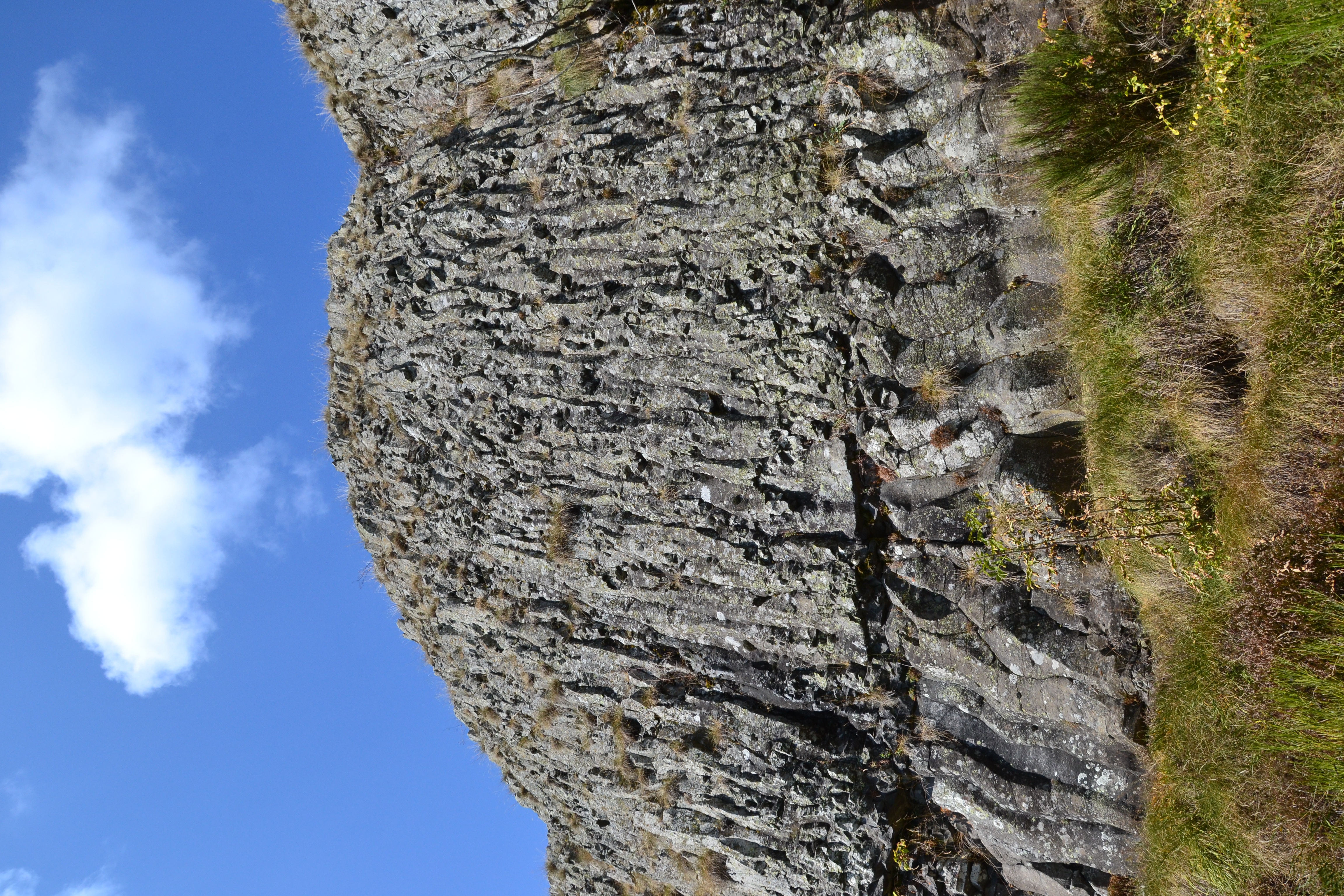
The prehistoric cliff of Longetraye at Freycenet-la-Cuche
The Geosite is in the volcanic province of eastern Velay, in the highlands close to Mont Mézenc and Mont Gerbier-de-Jonc, at the foot of a plateau almost 9 million years old.
Two fluid basalt flows covered an old granite plateau and the sands and pebbles carried at its surface by the rivers.
The Longetraye shelters developed in the basal part of the lava flow in an area called a ‘colonnade’ that features adjoining prisms, sometimes called "organ pipes". This feature is not clearly seen here as it is covered with tangled and irregularly formed prisms that make up the ceiling of the shelters. During the Ice Ages when the valley of the Orcival was forming, frost action eroded the regular prisms more readily than their covering, leading to the formation of the shelter.
20,000 years ago, at the peak of the last Ice Age, the Mézenc experienced a “periglacial” climate - cold but without glaciers. Widespread warming beginning 18,000 ago, led to the disappearance of glaciers in the Massif Central along with the arctic fauna, like reindeer, polar foxes, and mammoths which all retreated to Northern Europe. Around 13,500 BCE, the last Magdalenian hunter-trappers camped in the largest shelter.
As the cold steppes gradually disappeared, forests recolonized the high areas where winters remained long and snowy. Between 8,000 and 6,000 BCE, Mesolithic peoples from the Rhone area, moved into the valleys and mountains of Vivarais and populated the Mézenc where they settled in rock shelters. They were followed by farmers of the Southern Neolithic cultures and after 2,300 BCE, by pastoralists who practiced transhumance and peasants belonging to the Ages of Metals.
The many successive visits to the largest shelter have been dated by carbon 14 on wood charcoal and hazelnut shells extracted from its soil. Mesolithic populations were seasonal occupants of the shelter between 8,000 and 6,000 BCE. They left traces of their occupation in the shelters under the basalt flow of the Montpezat valley, evidence of their passage through the Claron pass neighboring the Béage, of their stay in Longetraye and also in the Puy basin.
These hunter-gatherers of final prehistoric times are archers. Their arrows are armed with delicate micro-points and ‘geometric microliths’- (various armaments whose outlines are triangular or trapezoidal), made from a distinctive fine and translucent flint out-cropping at Cruas in the Rhône Valley, and were found in abundance at Longetraye. They hunted deer and wild boar in the forests and exploited opportunistic plant resources like nuts, tubers, mushrooms and berries.
Practical informations
Free access.
Please respect this place and do not enter the shelters.